Abstract
The effects of teacher praise and disapproval on two target behaviors, inappropriate talking and turning around, were investigated in a high school English class of 25 students. The contingencies were applied to all students in the experimental class utilizing a multiple baseline experimental design in which the contingencies were aimed first at decreasing inappropriate talking behavior and then at decreasing inappropriate turning behavior. Observations were made of both student and teacher behavior. The results demonstrated that the combination of disapproval for the target behaviors and praise for appropriate, incompatible behaviors substantially reduced the incidence of the target behaviors in the experimental class. Observations of these behaviors in a control class of 26 students taught by the same teacher revealed no particular changes. The findings emphasize the importance of teacher-supplied social contingencies at the secondary school level.
Full text
PDF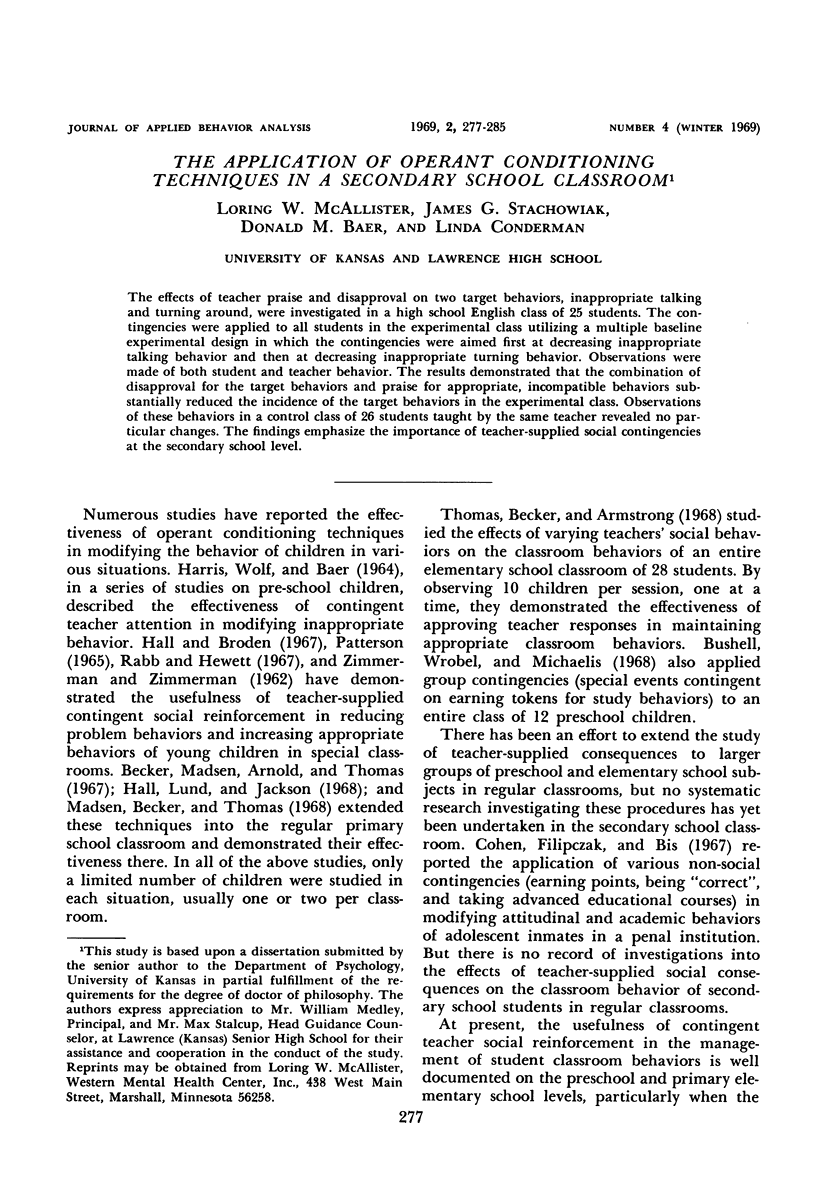
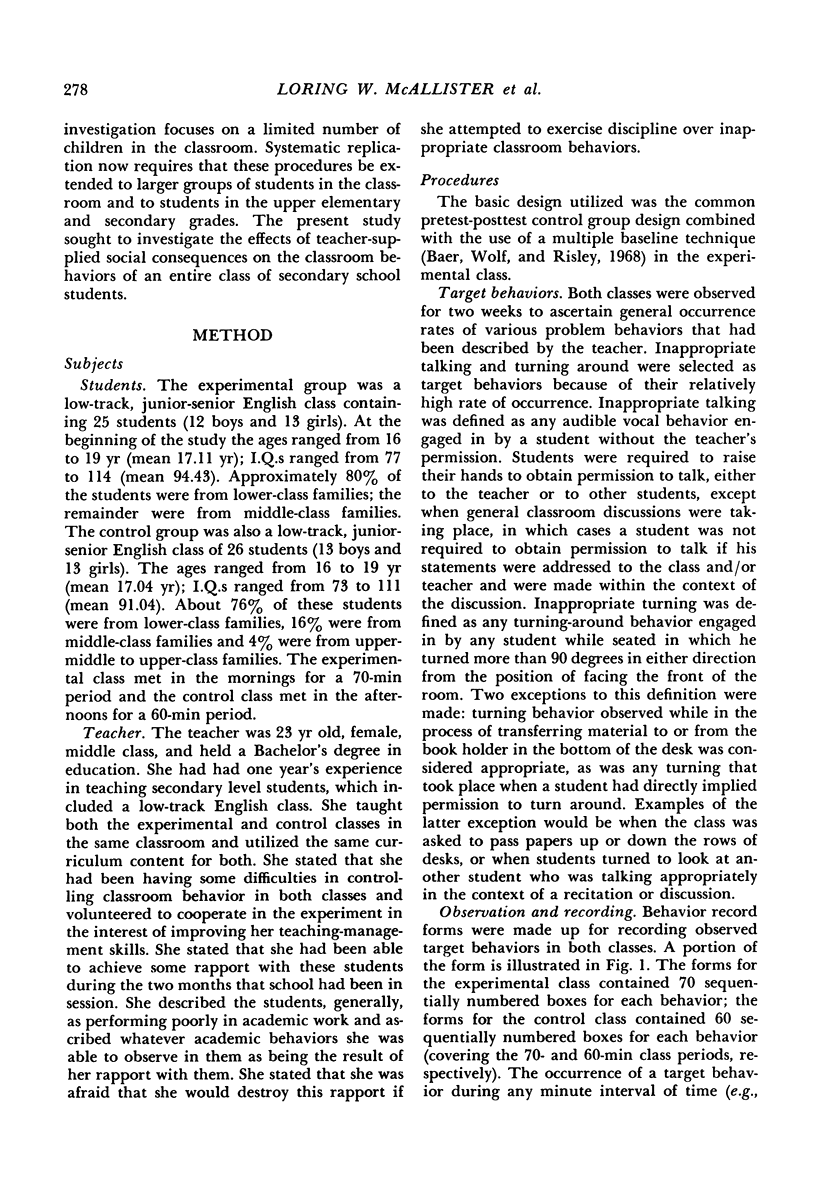
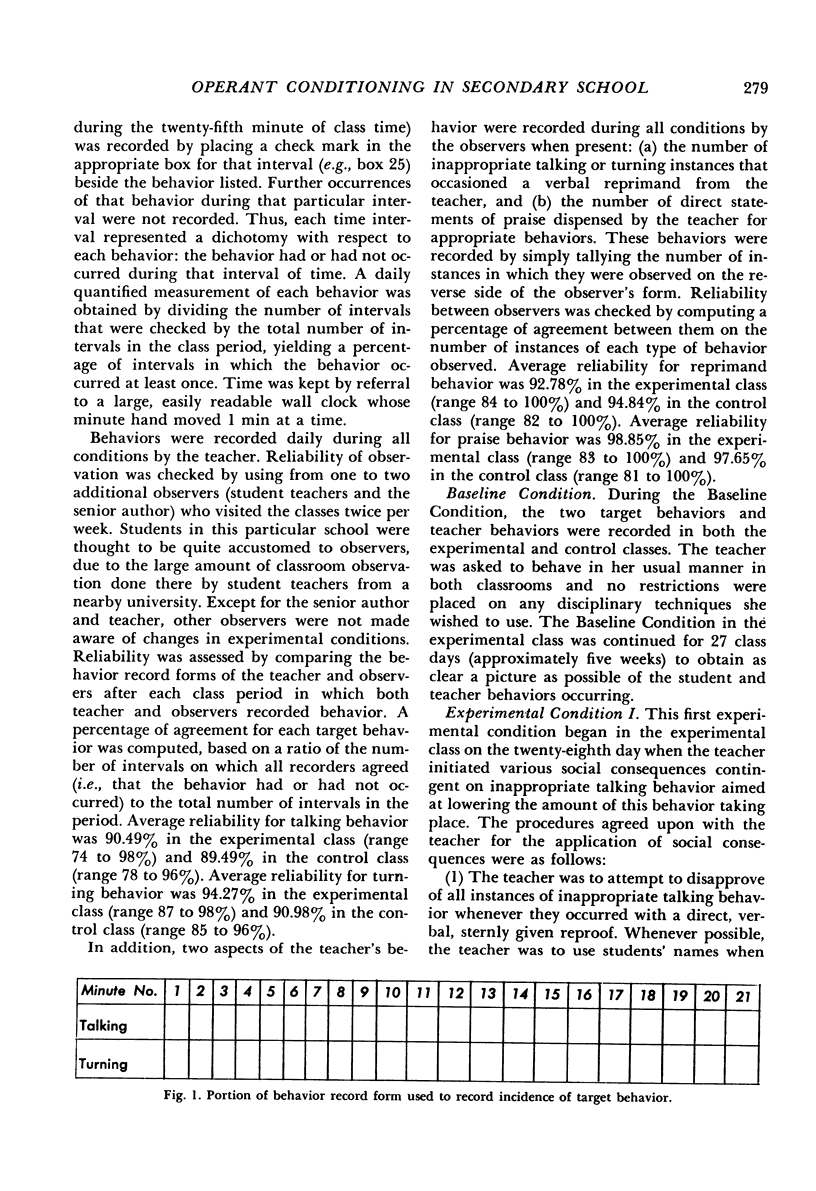
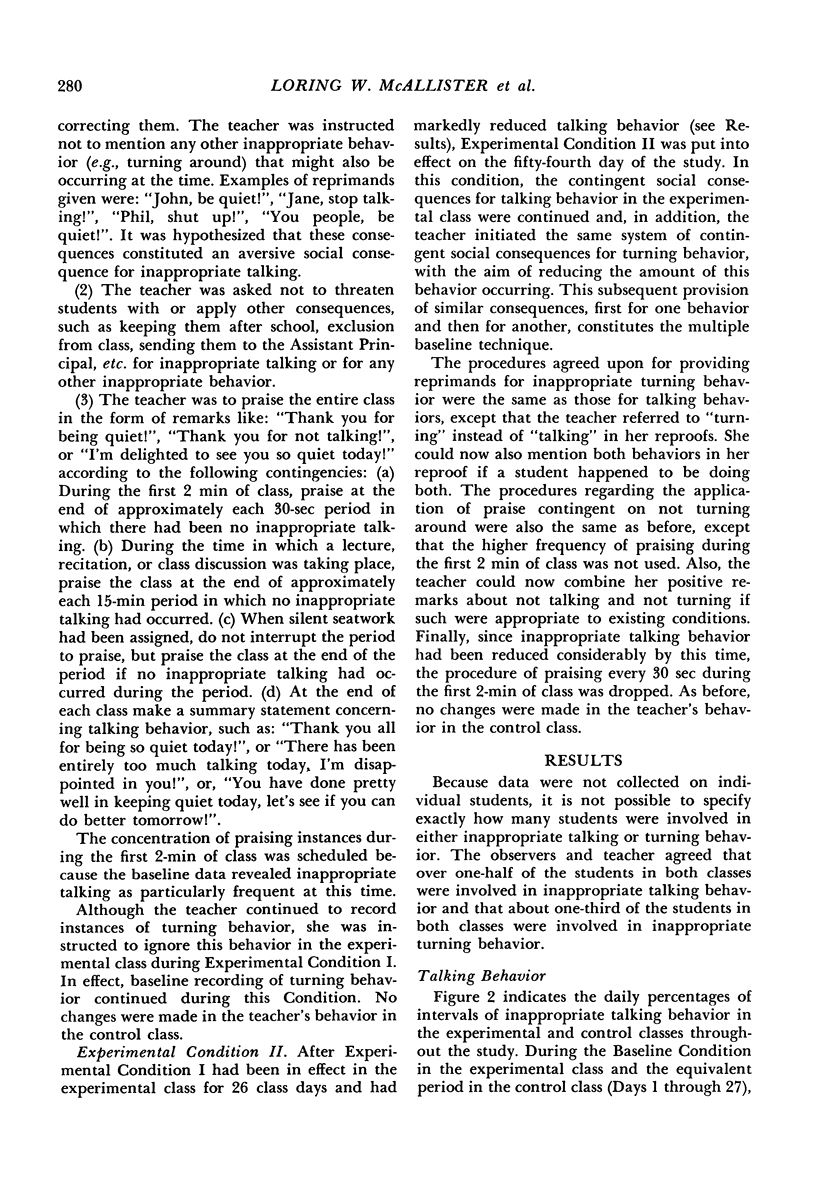
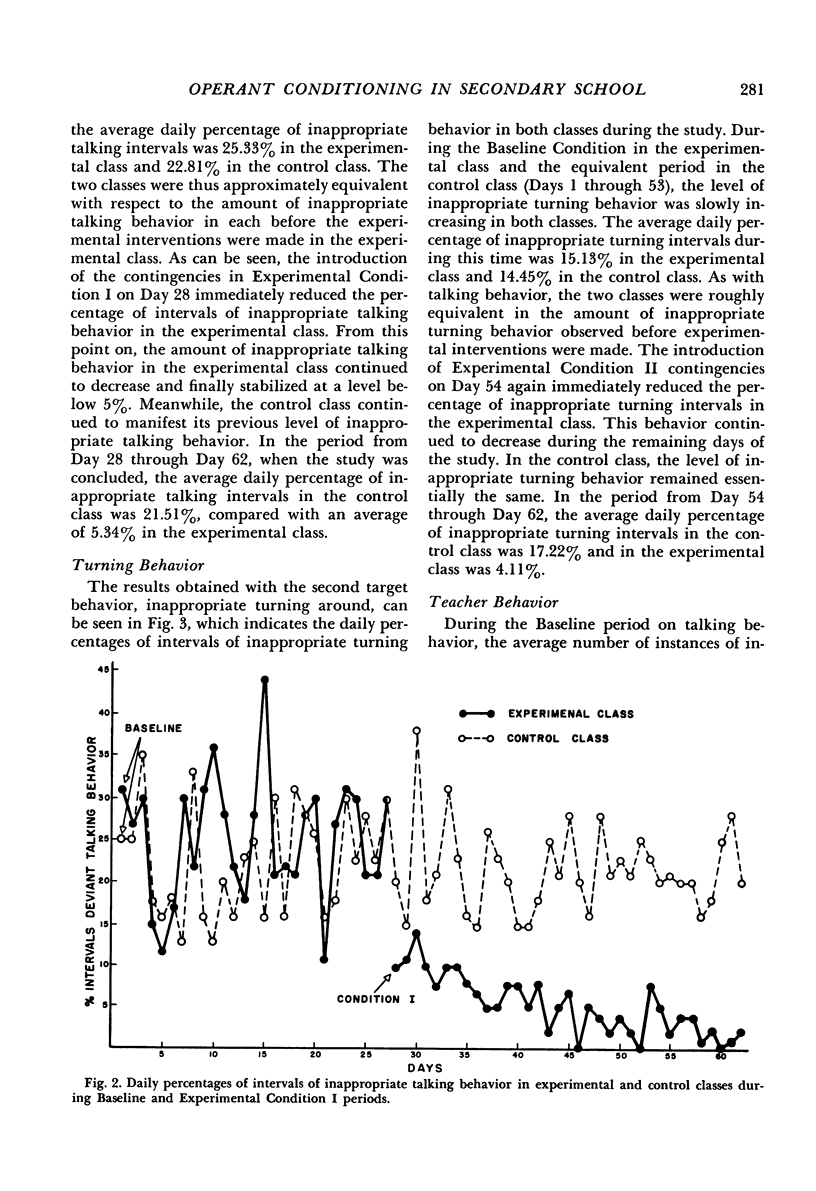
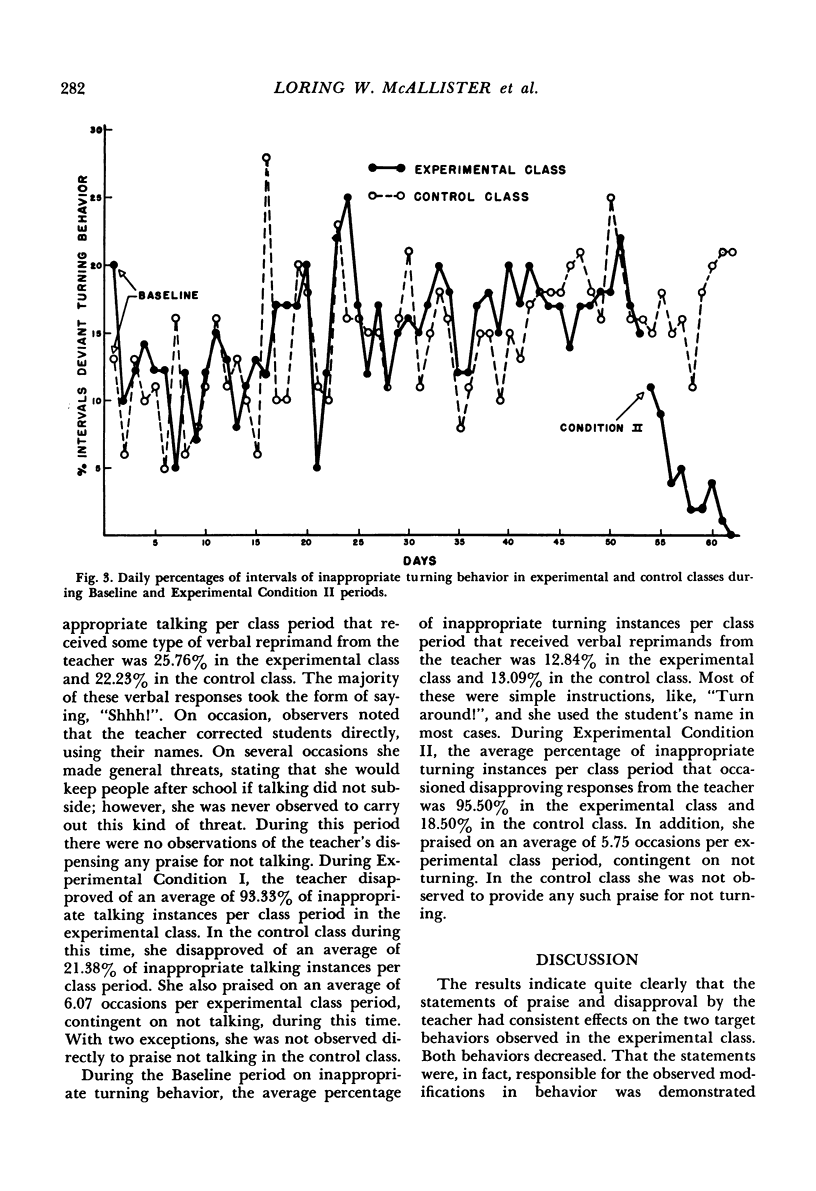
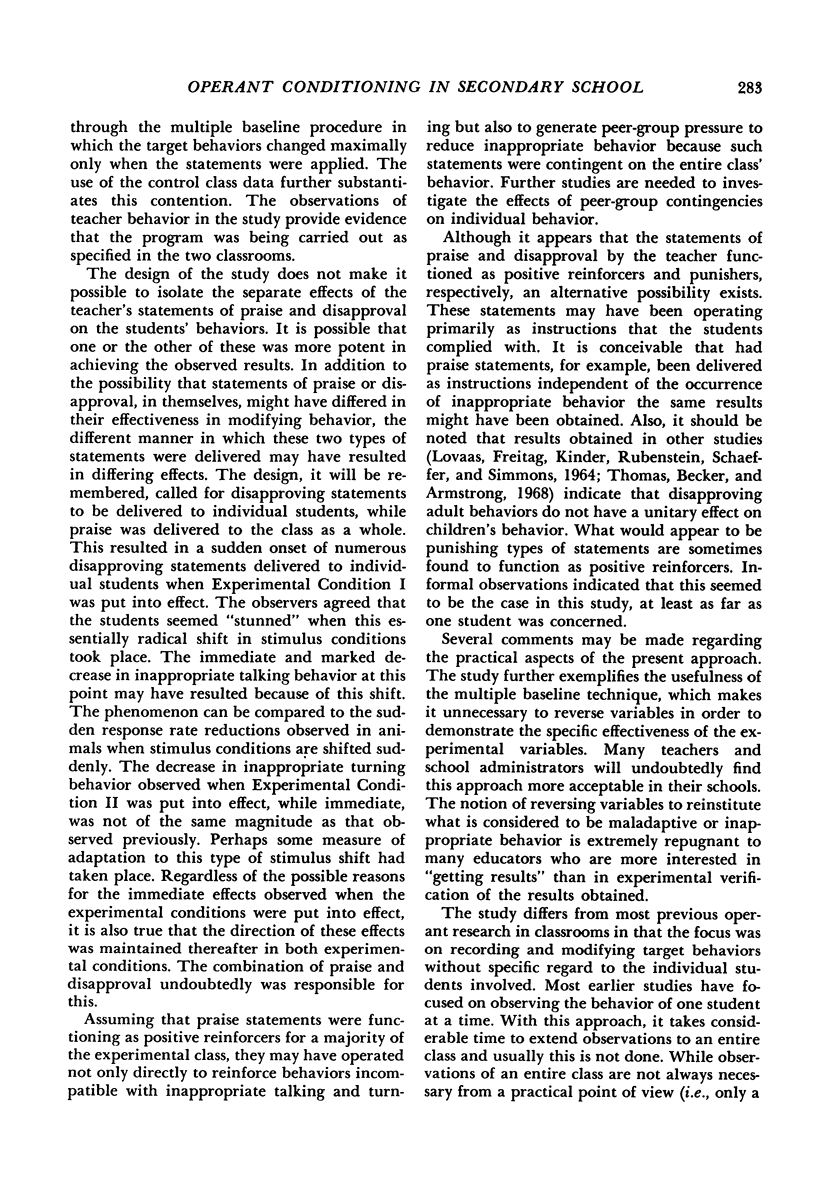
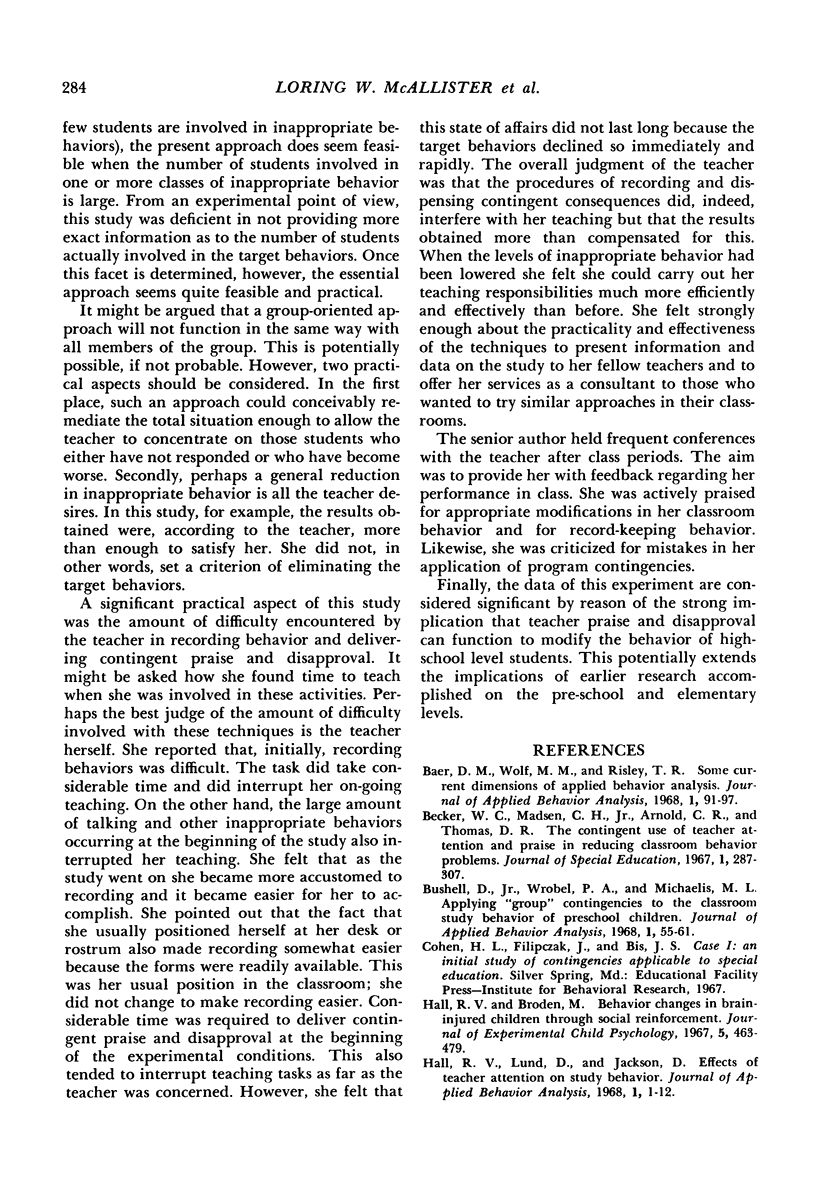

Selected References
These references are in PubMed. This may not be the complete list of references from this article.
- Baer D. M., Wolf M. M., Risley T. R. Some current dimensions of applied behavior analysis. J Appl Behav Anal. 1968 Spring;1(1):91–97. doi: 10.1901/jaba.1968.1-91. [DOI] [PMC free article] [PubMed] [Google Scholar]
- Bushell D., Wrobel P. A., Michaelis M. L. Applying "group" contingencies to the classroom study behavior of preschool children. J Appl Behav Anal. 1968 Spring;1(1):55–61. doi: 10.1901/jaba.1968.1-55. [DOI] [PMC free article] [PubMed] [Google Scholar]
- Hall R. V., Broden M. Behavior changes in brain-injured children through social reinforcement. J Exp Child Psychol. 1967 Dec;5(4):463–479. doi: 10.1016/0022-0965(67)90042-2. [DOI] [PubMed] [Google Scholar]
- Hall R. V., Lund D., Jackson D. Effects of teacher attention on study behavior. J Appl Behav Anal. 1968 Spring;1(1):1–12. doi: 10.1901/jaba.1968.1-1. [DOI] [PMC free article] [PubMed] [Google Scholar]
- Madsen C. H., Becker W. C., Thomas D. R. Rules, praise, and ignoring: elements of elementary classroom control. J Appl Behav Anal. 1968 Summer;1(2):139–150. doi: 10.1901/jaba.1968.1-139. [DOI] [PMC free article] [PubMed] [Google Scholar]
- Thomas D. R., Becker W. C., Armstrong M. Production and elimination of disruptive classroom behavior by systematically varying teacher's behavior. J Appl Behav Anal. 1968 Spring;1(1):35–45. doi: 10.1901/jaba.1968.1-35. [DOI] [PMC free article] [PubMed] [Google Scholar]
- Zimmerman E. H., Zimmerman J. The alteration of behavior in a special classroom situation. J Exp Anal Behav. 1962 Jan;5(1):59–60. doi: 10.1901/jeab.1962.5-59. [DOI] [PMC free article] [PubMed] [Google Scholar]


